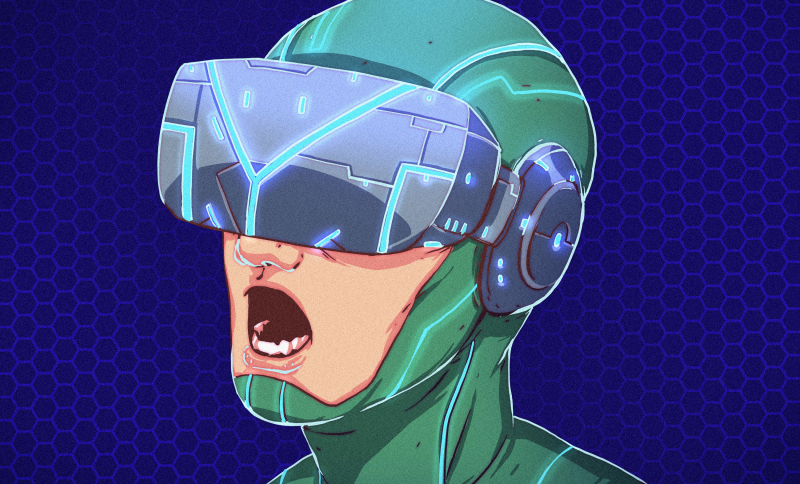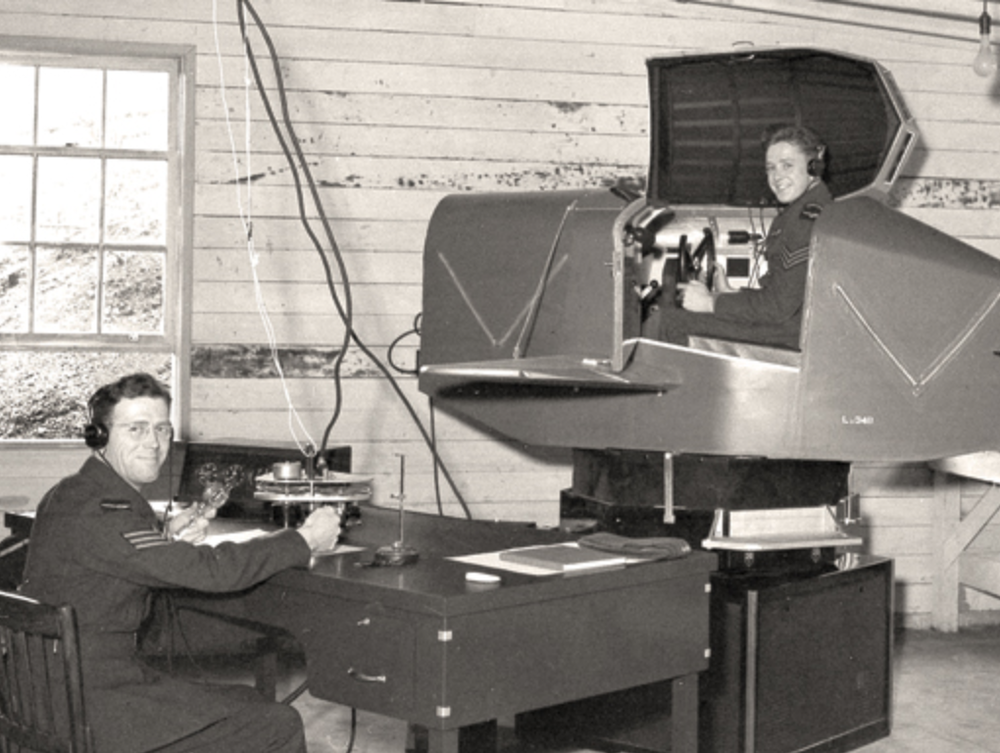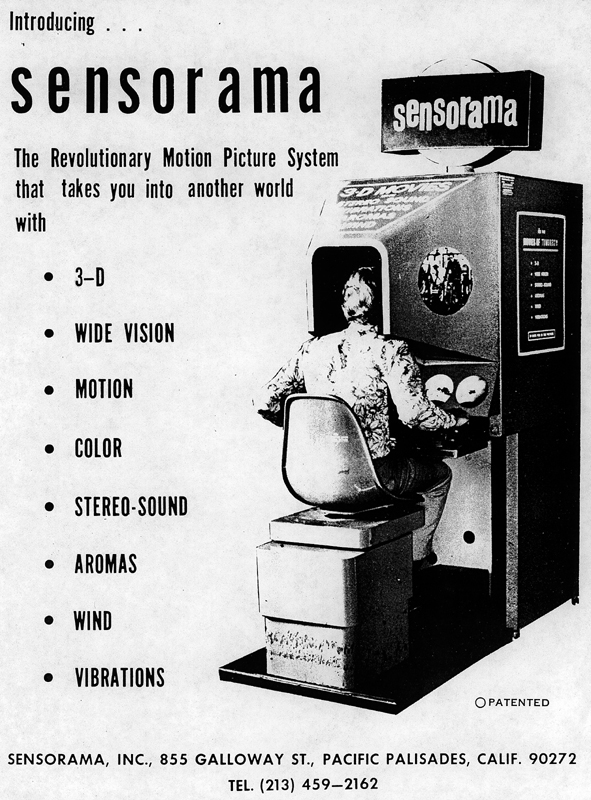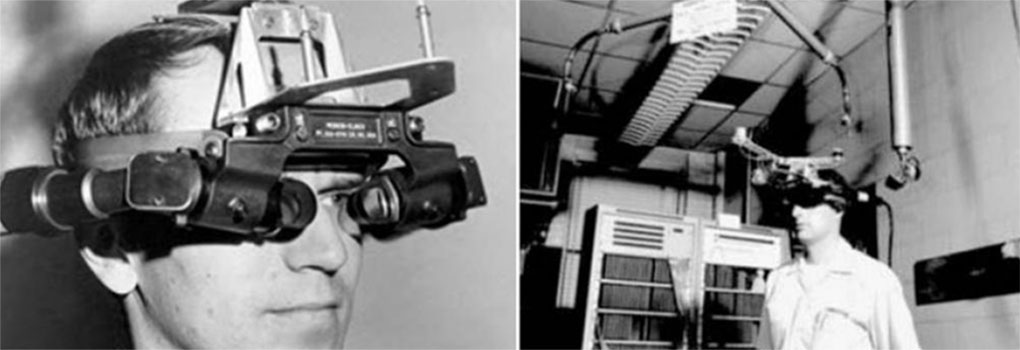
Virtual reality technology is developing very quickly. Nowadays, you won't surprise anyone with video glasses or a VR game. Over the past few years, many technological innovations have been implemented.
Nevertheless, most of the basic ideas of virtual reality appeared not now, but in the 60s of the last century. And so far, not all of them have been implemented. Let's see who came up with what, what we already have, and what will have to wait.
Interoperability and emulation
The most important elements of VR are interactivity, the ability to interact with the environment, and the environment itself, or rather, its emulation. In the 1960s, there were two prototypes of these technologies.
For example , the Link Trainer was an early prototype of a flight simulator. The goal of the project is to provide the user with realistic flight equipment and provide feedback to flight control instruments. All this made it possible for the student-aviator to get a visual idea of the flight and its different conditions without risking himself and the aircraft. The simulator was also suitable for professionals who could improve their skills.

This simulator was in great demand as it made it possible to study the nuances of different flight modes.
Sensorama- a completely different system. This is an entertainment project for movie lovers. Sensorama made it possible to view short films in stereoscopic mode. The work of fans, odor generators (yes, this is far from a new idea), a movable chair and stereo sound were synchronized with the image. Sensorama, in fact, is one of the first attempts to involve a person in virtual reality, immerse him in emulation, making him feel about the same as in the real world.

But these were all analog technologies. The development of computer technology has given these and other similar systems a second life.
The ultimate display
In 1965, Ivan Sutherland, a computer scientist, wrote The Ultimate Display (PDF). In it, he outlined ideas that were ahead of his time. Unfortunately, there were no technological possibilities for their implementation, although the author did something. As for the essay, it is short, only two pages. In the first part, the author reflects on the interactivity of computers and input technologies of the 60s.
The second part is more interesting, in it the author talks about the future, technological progress and the "kinesthetic display", which allows you to use all human senses when immersing him in virtual reality. According to Sutherland, computers of the future must work not only with visual information, but also output sound, plus interact with a person using vibration motors, smells, etc. When the author wrote his essay, computers were not able to reproduce sounds like they do now, let alone an image.
Full interactivity

The sword of Damocles is Sutherland's attempt to develop an interface that at least a little bit corresponded to his ideas and ideas about the ideal
Sutherland's idea was that people are very familiar with different ways of interacting with the world around them. We understand how an object looks from a different angle, we know how to make an object move or how to stop movement.
Sutherland came up with a completely logical idea that our ideas about the real world, sensations can be transferred to a kind of virtual world. This would allow us to get acquainted with new opportunities that are not available to us in the ordinary world.
In order to at least partially realize their ideas, Sutherland and his students developed a system suspended from the ceiling, which they called the "Sword of Damocles" (photo of the system above). Part of the "sword" was the first of its kind screen, the image of which was not transmitted by the camera, but by the computer, and the image was created by it. Of course, it was vector graphics, but that's already something. Moreover, one could change one's position in this “vector reality” by simply changing the position of the head or entering data.
In general, it was the "Sword of Damocles" that was the first successful attempt to create virtual reality with a person immersed in it. Full immersion could not be due to technological limitations, but the result is impressive.
Ideas from the 60s that were implemented
Most of the concepts and ideas described by authors in the 60s are now used in the form of technology. Here are the main ideas.
Objects generated by a computer may not obey the rules of ordinary reality.
In virtual reality, you can remove gravity or make it very large, change the light source, generate anything you can imagine. A vivid example of this is games, and not only VR.
Sutherland himself envisioned a computer-controlled display with images like a mirror into a mathematical wonderland. And this is also possible, since a three-dimensional engine for non-Euclidean geometry has already been created, which shows us a new world with the help of interactive.
Tactile feedback
The ideal tactile interaction with the virtual world has not yet been achieved. But in general, this technology has been working for a long time. Modern virtual reality controllers, including joysticks, game controllers, smartphones, provide a tactile response to user actions in the virtual world. The same smartphone with virtual buttons is a good example of this.
Head and Hand Tracking
One of the first technologies implemented by the creators of virtual reality is head tracking. This feature has appeared in virtual glasses for a long time. Even the cheapest glasses, where you need to insert a smartphone, provide this opportunity thanks to the gyroscope of the phone itself.
In addition, the position of the hands is now being tracked - many modern VR games support this possibility. True, only if there are special controllers.
Touch, smell, other tactile sensations
Any "5D cinemas" provide an opportunity to fully immerse yourself in virtual reality, experiencing overload, the feeling of wind and splashing water, and sometimes smells. This technology is gradually being improved.
And what hasn't been implemented yet?
Highly
Accurate Gaze Tracking Eye tracking is not so difficult to implement. The main thing is to determine the location of the pupil, then with a certain assumption it is possible to determine where the owner is looking.
But high-precision tracking is a completely different matter. There are many problems here, including involuntary eye movements, features of the structure and color of the eyes of some people, etc. And the pupils themselves are not so easy to follow, since it is also not static. This video explains the issue in detail . In general, eye tracking technology is gradually improving, but it remains too complex to become mainstream.
Accurate force feedback
The point is that there is still no high-precision force feedback in mainstream VR technologies. Yes, simulated hugs, handshakes, etc. - all this is there, the corresponding projects exist.
But high-fidelity simulations of simple real-world physics are still the preserve of specialized projects that have not made it to the public. Yes, and additional equipment is required here, gloves / helmet alone are not enough.
Perfect simulation
This is the most difficult part to implement, which was fantastic for the 60s of the last century and remains so today.
This is about the last sentences of Sutherland's essay, where he says that an ideal simulation is a room in which a computer controls the properties of matter and its very existence. So, the chair, which is in such virtual reality, should be a real chair, allowing the user to sit on it. Well, a bullet fired in such a room would be fatal.
Sounds like part of the plot of The Matrix, right?
Separating important functions from just cool ones
It is safe to say that the best ideas for virtual reality came from the middle of the last century. However, some part was not implemented because it is either expensive or not really necessary. The main thing that the creators of virtual reality wanted to achieve was immersion in it, when a person ceases to notice its individual elements and sees an integral "picture", interacting with surrounding objects and the simulation itself, as with reality.
Some things turned out to be unnecessary for diving. For example, a wide viewing angle - it is not always needed. As for the sound, no matter how high-quality it may be, its transmission through the "earbuds" reduces the degree of immersion. The human brain begins to classify the sound as "not real". The earbuds are good for listening to music, but not for virtual reality.
But it is very important - a screen with good tracking and low latency. A person knows that he has a helmet on his head, but the brain does not seem to pay attention to this, considering the "picture" on the screen to be real. There is no such thing if you use old video helmets. For example, the Forte VFX1 VR was available in the mid 90s. But, of course, he did not "stand next to" the current video helmets. The technologies of that time simply did not allow creating a high-quality virtual reality, where a person could plunge headlong.
What's next?
Probably, existing technologies will be improved, new ones will appear. In addition, tracking of human facial expressions and emotions will appear in virtual reality. These technologies are already being developed, for example, Facebook is working.
It will enhance the degree of interactivity and improve the quality of virtual meetings. It's not only about games, but also about other technologies, such as virtual classes, business meetings, friendly meetings, etc.
Now the speed of progress of VR technologies has increased thanks to quarantine, so in the future we can expect new achievements from developers. Perhaps very soon we will be able to see the latest developments that will enhance the degree of immersion in virtual reality. But in any case, their base is all the same ideas from the 60s.
